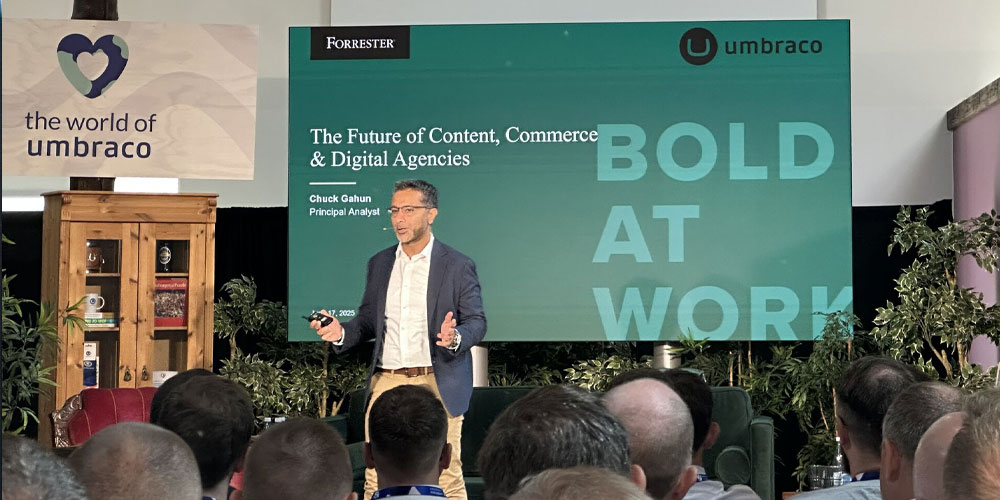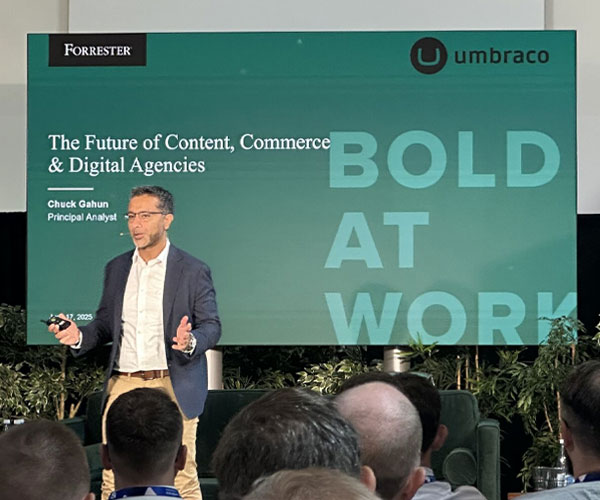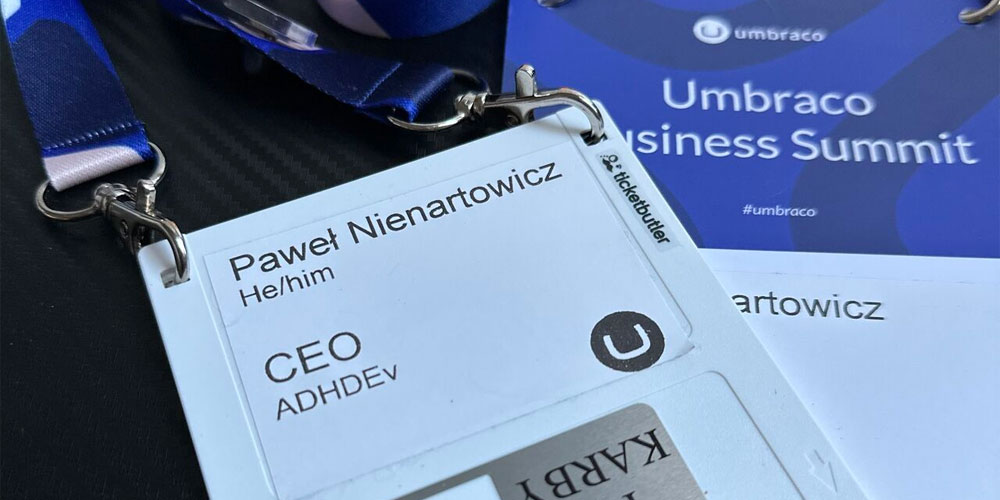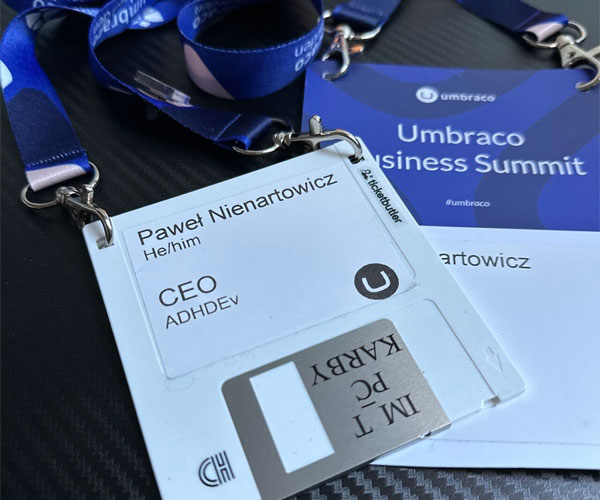This year's Codegarden was a special one. The 20th-anniversary edition brought an even stronger focus on the future of the platform and the broader digital experience space. From major AI announcements to practical guidance on personalization and content experimentation, the message was clear: Umbraco is evolving fast, and its community is moving with it. Here's what stood out to us.
AI is moving inside Umbraco
One of the most talked-about moments of the conference was the introduction of the Umbraco MCP Server. It's a new layer that enables AI agents, like Claude or Copilot, to operate actively within Umbraco projects.
This isn't about chatting with a bot about your CMS setup. It's about giving AI agents access to the structured context of your project and enabling them to take action in real time. Whether it's adjusting product pricing, generating content, or analyzing logs, the demo made it clear that this technology can change how we approach day-to-day work in Umbraco - especially for larger, more complex builds.
It opens the door to automating routine tasks, speeding up implementation, and even supporting less technical users with guided, AI-assisted workflows. It's early days, but the potential is real.
Web content tech is gaining momentum
Spending on web content technologies is forecast to reach over 15 billions of dollars by 2028. It's faster growth than the broader software market, shows the increasing strategic importance of content platforms in digital transformation efforts.
Umbraco is part of that trend. With over 25 percent year-over-year revenue growth, the platform continues to expand in both features and user base.
Personalization is no longer optional
The discussion around personalization this year felt less theoretical and more grounded in real use cases. The consensus is that users are far more likely to engage when content feels relevant to them. But successful personalization isn't about launching complex targeting rules from day one.
Start small. Begin with clearly defined personas built from actual data, not assumptions. Track the right signals early, iterate as you learn, and build up your logic from there. This incremental approach helps teams avoid overengineering and makes it easier to measure impact.
Umbraco Engage was highlighted as a practical entry point here. It provides teams with a way to experiment with content variations and audience segmentation without a heavy technical lift, making it easier to build trust between the agency and client as results start to show.
The strength of the community continues to grow
One of Umbraco's key differentiators remains its community. Even a small internal team working with Umbraco gains access to a global network of developers, contributors, and partners. That network can offer advice, code, support, and perspective, all of which help turn architectural flexibility into a real competitive advantage.
And it's not just about goodwill. The platform itself continues to benefit from this energy, with product updates and best practices often shaped by input from users who utilize it every day.
Total cost of ownership matters, and Umbraco delivers
More organizations are looking at the full cost of their tech stack, not just license fees. In that context, Umbraco can offer a clear business case. Several case studies shared during the event showed that migrating to Umbraco can cost less than a single year of licensing on a legacy enterprise CMS.
Combined with a growing partner ecosystem and a wide range of hosting options, Umbraco remains a strong choice for companies seeking to modernize their digital platforms without incurring excessive financial commitments.
XLTS: now with 5 years of support
One notable practical update is the launch of XLTS - Extended Long-Term Support for Umbraco LTS versions. This increases the support window from 3 years to 5, giving clients and teams more stability when planning multi-year digital programs or working with longer development cycles.
Tech upgrades as an opportunity
Mandatory version upgrades aren't always welcome news, but they can be helpful. Several talks this year focused on using these moments as an excuse to revisit broader UX and brand considerations. If you're already working with code, it's a good time to streamline checkout flows, refresh key page designs, or realign visuals with the updated brand guidelines.
In other words, treat technical upgrades as a checkpoint and not just a task to make sure the customer journey stays aligned with business goals.
Looking ahead
Codegarden 2025 showcased a platform that's maturing quickly, with a clear focus on AI integration, personalization, and long-term stability. It also reminded us of what makes this community stand out: a shared commitment to learning, building, and improving together.
See you at Codegarden 2026!
Are you looking for Umbraco Partner in Poland? Looking to outsource talented Umbraco Experts? Give us a call and let's dicsuss your project!



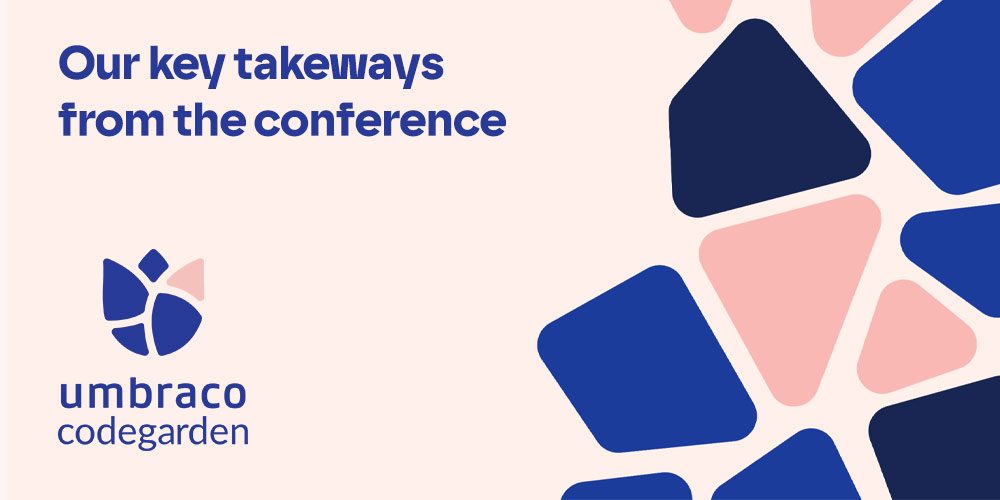
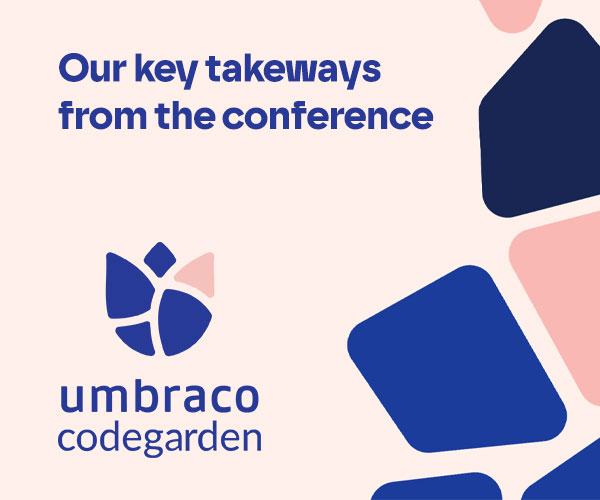
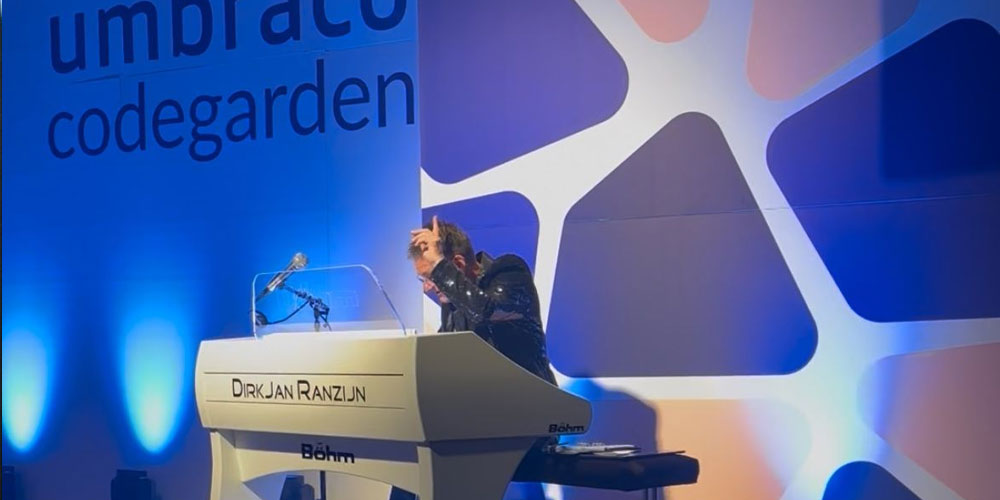
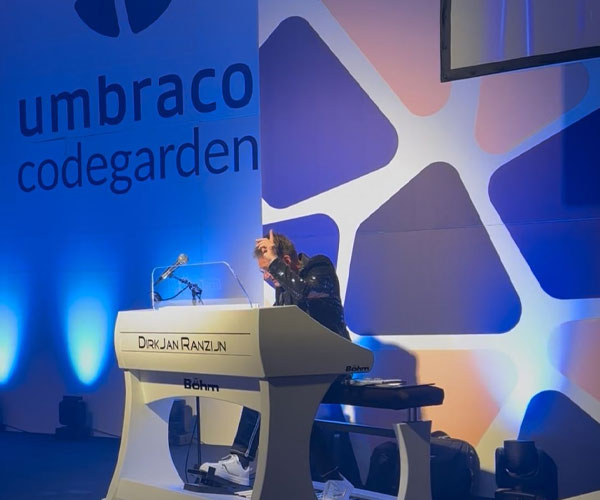 It opens the door to automating routine tasks, speeding up implementation, and even supporting less technical users with guided, AI-assisted workflows. It's early days, but the potential is real.
It opens the door to automating routine tasks, speeding up implementation, and even supporting less technical users with guided, AI-assisted workflows. It's early days, but the potential is real. 